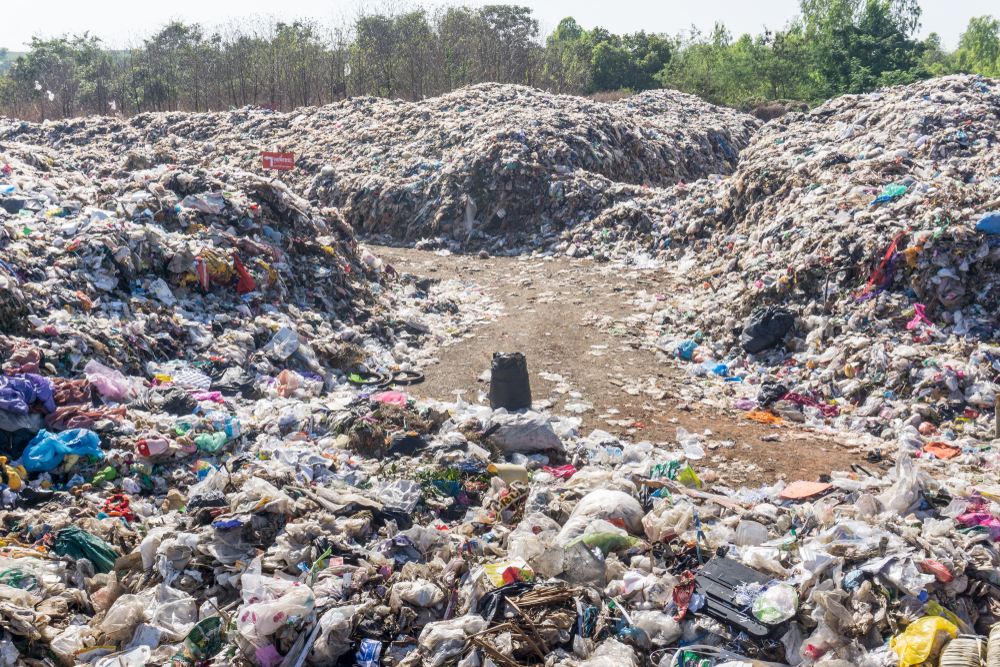Are Travelers Creating Too Much Plastic Waste?
How many plastic products do you use every day?
Today I’ve already used a toothbrush, a shampoo bottle, a water bottle, a takeaway coffee cup and straw, and plastic bags. And what happens to all that disposable plastic when we’re done with it?
19 billion (yes with a b) pounds of the plastic waste end up in the oceans every year. Scientists predict this number could double by 2025. Plastic waste not only kills marine life and destroys coral reefs, but also enters the food supply chain, causing harm to human health.
As frequent travelers, we too often rely on single-use plastic products: travel-sized bottles, utensils, water bottles. Travel inevitably causes pollution. But if we want to keep traveling in a habitable Earth, we need to do our part to protect the world we all so desperately want to explore.
The Nomadic Footprint
Mass tourism is destroying the world’s most beloved travel destinations. Now more than ever, tourists (backpackers and digital nomads included) are flocking to exotic destinations all over the world. Marrakech, Bali, Cartagena — any popular location you’ve come across on Instagram. While the surge in tourism can bring economic benefits to these destinations, it wrecks the local culture and environment.
Beaches in Thailand and the Philippines started closing for parts of the year to take a break from mass tourism. During this time, locals will try to clean the pollution and litter from the waters. But this is a daunting task. Plastic and consumption waste only keep piling up. Plastics, in particular, take hundreds of years to break down.
Change Your Travel Patterns
Dead animals with plastic-lined stomachs are washing ashore all over the world. Beaches are made of garbage instead of sands. And many locals who have to live with the consequences of over tourism are starting to resent the visitors.
It’s time for us to make a change.
As travelers, we need to remember that we are guests. Everywhere we visit is someone else’s home. And we need to treat it with respect.
Although this seems basic, it’s worth mentioning: DON’T LITTER. Please, don’t throw your trash (plastic or not) on the ground, in the ocean, or anywhere besides a trash can or recycling bin.
In addition to cleaning up after yourself, you can reduce your traveler footprint in many ways:
- Pack reusable bottles
This is a simple way to cut down on plastic waste. Instead of buying single-use water bottles, bring your own reusable bottle when you travel. You can also bring a reusable thermos for coffee (to cut down on those cups, straws, stirrers, etc). - Clean up along the way
Besides cleaning up your own waste, you can help by cleaning up other people’s waste, too. As you hike up a mountain or stroll through a city, clean up any trash that’s just sitting there. In places like Japan and Taiwan, trash cans aren’t always available. So always pack a reusable bag as your “trash/recycling” bag and you can use it for your own trash and pick up others’ along the way. - Avoid gum
Surprisingly, gum actually contributes significantly to the plastic problem. Chewing gum is made of plastic particles and is typically packed in plastic. If possible, skip gum altogether (or at least dispose of it properly). - Fun fact: Singapore actually banned chewing gum since 1992 to keep the streets clean.
- Pack reusable utensils
Just like you packed reusable bottles, consider bringing reusable utensils on your journey. If you want to snack on something from a street vendor, you can skip getting the single-use plastic utensils. - Farawild carries an adorable bamboo utensil to-go set that’s handy and appetite-inducing!
- Consider different menstrual products
Yes, menstrual products also contribute to the plastic problem. Many of these single-use products are made with plastic packaging. Consider trying a reusable and low-waste menstrual cup instead — it also takes up less space in your luggage (and most travelers know, we need all the packing space we can get). - Volunteer
Take some time out of our travels to give back. Volunteering is a great way to feel more connected to the place you are visiting. There are many environmental groups around the world that work with volunteers to clean up beaches, hiking trails, and other polluted areas. Research the area you’re planning to visit and contact a local clean-up group for more information. As a bonus, this is a great way to meet people on your travels.
Moving Forward
As digital nomads and frequent travelers, we all need to play our part. Once we start paying attention to the problem, we can see plastic products everywhere. It takes a monumental global effort to just reduce the damage that’s already been done.
We can’t wait for the United Nations or any government to act on the problem. We need to start being environmentally conscious within our home, and take that practice with us when we travel.
We all want to explore the world. And when we get to our dream destination, we want it to look like the stunning pictures we’ve seen on Instagram, right? We don’t want those glorious Bali beaches and the Amalfi coastlines to be filled with waves of plastic.
Let’s all agree to start small. Order a reusable bottle. Pick up some trash on your next hike. Let’s make the traveling community known for courtesy and stewardship instead of disrespect and pollution.

